Rane FAC 24 Handleiding
Rane
Niet gecategoriseerd
FAC 24
Bekijk gratis de handleiding van Rane FAC 24 (4 pagina’s), behorend tot de categorie Niet gecategoriseerd. Deze gids werd als nuttig beoordeeld door 8 mensen en kreeg gemiddeld 4.3 sterren uit 4.5 reviews. Heb je een vraag over Rane FAC 24 of wil je andere gebruikers van dit product iets vragen? Stel een vraag
Pagina 1/4

OPERATING / SERVICE MANUAL
FAC 24/28
using a constant-directivity horn, set the “HORN EQ IN OUT” switch to the “IN” position and ad-
just the frequency control per the recommendations of the horn’s manufacturer. Set the “PHASE
IN OUT” switch to the “OUT” position. Set the crossover frequency selector to the frequency
recommended by the speaker manufacturer. Power up the system and set the input and output
levels for appropriate performance.
NEVER CONNECT ANYTHING EXCEPT AN APPROVED RANE POWER SUPPLY TO
THE THING THAT LOOKS LIKE A TELEPHONE JACK ON THE REAR OF THE FAC
24/28. This is an AC input and requires special attention if you do not have an operational power
supply EXACTLY like the one that was originally packed with your unit. See the full explanation
of the power supply requirements elsewhere in this manual.
It is a good idea to begin with all level controls set to their full counterclockwise position. Un-
less you are certain that there is an electrical inversion in one of your amplifiers or drivers, set
both “POS INV” switches to their “POS” positions. Both mute switches should be “out”. If you arc
the use of a FAC 24/28.
QUICK START
No one likes to read manuals. Everyone likes to plub in and turn on. That’s usuallv OK and
with only a very few exceptions, damage is unlikely to result from such procedures when initiating
SYSTEM CONNECTION
When connecting the FAC 24/28 to other components in your system for the first time, LEAVE
THE POWER SUPPLY FOR LAST. This will give you a chance to make mistakes and correct
them before any damage is done to your fragile speakers, ears and nerves.
INPUTS on the FAC 24/28 are balanced. The 3-pin (XLR) uses pin 2 as “hot” or “+” signal
polarity, pin 3 is “return” or “–” and pin 1 is signal ground. If unbalanced operation is required, drive
pin 2 as hot and pin 1 as ground. The l/4" input is a tip-ring-sleeve connector. Tip is (+), ring is (–),
and sleeve is ground. Unbalanced l/4" inputs should drive tip as hot and sleeve as ground and may
be either a “mono” l/4" or TRS l/4" with the ring left open or tied to sleeve, your choice. See Rane
Note 110 for further information on this subject.
OUTPUTS. The FAC 24/28's outputs are balanced as well. As with the 3-pin input, pin 2 is hot
and pin 3 is not. Pin 1 is signal ground. True balanced operation requires only the use of pins 2 and
3 for signal and either cast ground (chassis) or pin 1 signal ground for shielding. If unbalanced out-
put is your preference, use pin 2 as signal and pin 1 as return. Use case ground for shield. The l/4"
output is a tip-ring-sleeve character whose polarities match the input connector. Again, have a look
at Rane Note 110 for more detail.
THE LOW SUM INPUT is used to combine the low frequency outputs of two crossover
modules
(mono sub bass in stereo applications). To take advantage of this feature, the low frequency output
of one crossover module connects to this input (unbalanced only). The sum of both modules low frequency sections then ap-
pears at the low frequency output of the module whose low sum input is being driven.
3-WAY, 4-WAY etc. Two or more FAC crossovers may be used together to produce 3, 4 and S-way systems. To accomplish
this, the first unit is driven with full range audio. The Sub bass output is taken from the low out of the first module, the high
out of the first module then drives the main input of the second. For 3-way applications, mid and high are taken from the low
and high outs of the second module, respectively. If a four way system is being constructed, the high out of the second
module drives the third, the low out of the second module becomes the low-mid, the low out of the third module is the 3rd
frequency range, the high out of the third module becomes the 4th. See the diagram on the back page of this document as
well as the Flex User’s Guide for more details.
CHOICES need to be made regarding which input and output connectors to use. Generally, the l/4" ins and outs work well
enough and are definitely cheaper to use in terms of the labor required to terminate cables with 1/4" plugs and the material
cost. The 3-pins do, however, provide a locking mechanism for situations where physical abuse can be a problem. The 3-pin
also provides a tighter connection and can be more impervious to corrosion and stresses of time and environment.

FRONT PANEL DESCRIPTION
1. INPUT OVERLOAD INDICATOR. This red LED will illuminate any time the input stage
is driven to within 4 dB of clipping. This level is a function of both input signal level and the
position of the input gain control.
2. INPUT LEVEL CONTROL. This rotary control determines the input gain of the cross-
over. Its range is from -20 dB to +6 dB. The majority of applications should find this control
set at 0 dB for unity gain.
3. HIGH OUTPUT OVERLOAD INDICATOR. This red LED will illuminate anytime the
high frequency output of the crossover is driven to within 4 dB of clipping. This level is a func-
tion of both the input level and the high frequency output level control.
4. HIGH OUTPUT LEVEL CONTROL. This rotary control determines the amount of gain
to follow the high frequency output of the crossover’s frequency dividing network. Its range
covers Off to +6 dB.
5. HIGH FREQUENCY INVERT SWITCH. This two position slide switch electrically in-
verts the high output in the INV position. This may be necessary where drivers or amplifiers
are tied incorrectly or when the crossover’s phase control lacks sufficient range (more than
180 degrees becomes necessary).
6. HIGH FREQUENCY MUTE SWITCH. In its in position, all output signal from the high
output of the crossover will be totally muted. This is to be used when initially setting levels of
the low output and during the phase alignment process.
7. HORN EQ DEFEAT SWITCH. If a constant-directivity horn is to used on the high output,
set this switch to the IN position.
8. HORN EQ FREQUENCY CONTROL. This rotary control allow a continuously variable
adjustment of the frequency at which boost begins to occur. This should be set based on the
horn manufacturer’s recommendation.
9. CROSSOVER FREQUENCY SELECTOR. This rotary control offers 24 precise frequen-
cies at which the crossover makes the divide between the high and low outputs. It is a binary
encoding switch which sets up the digital control of the filter’s frequency dividing circuits for
very high precision.
10. PHASE CONTROL BYPASS SWITCH. In its “OUT” position, the phase control has no
effect on the low frequency output.
11. PHASE ANGLE CONTROL. This rotary control provides a constantly variable 0 to 180
degree phase shift between the low and high outputs.
13. LOW FREQUENCY OVERLOAD INDICATOR. This red LED illuminates any time the
Low Output comes within 4 dB of clipping. This level is a function of input level as well as low
frequency output level.
13. LOW FREQUENCY LEVEL CONTROL. This rotary control wits the output gain of
the low frequency section from Off to +6 dB.
14. LOW FREQUENCY INVERT SWITCH. This switch electrically inverts the polarity of
the low output in the “INV” position. This may be necessary for many of the same reasons
cited in #5, above.
15. LOW FREQUENCY MUTE SWITCH. Identical to #6, above with the exception that it
mutes the low output.
16. POWER INDICATOR. Illuminates whenever the correct AC power is applied to the unit
from a remote power supply.

REAR PANEL DESCRIPTION
1. l/4" INPUT CONNECTOR A balanced/unbalanced input, the tip is positive, ring is negative
and sleeve is ground. For unbalanced operation, drive. the tip as hot and the sleeve as ground.
You may use a TRS or “mono” connector. If the former is used, the ring may be left open or
shorted to sleeve.
2. 3-PIN INPUT CONNECTO
R Pin 2 is positive, pin 3 is negative and pin 1 is signal ground.
For unbalanced operation, drive pin 2 as hot and 1 as ground.
3. 1/4" HIGH FREQUENCY OUTPUT CONNECTOR This l/4" TRS connector parallels the
3-pin connector featured in item #4. Tip is positive, Ring is negative and Sleeve is signal ground
4. 3-PIN HIGH FREQUENCY OUTPUT CONNECTOR. Pin 2 is positive, pin 3 is negative and
pin 1 is signal ground. For unbalanced operation, DO NOT SHORT ANY PINS TO ANY
OTHERS. Active balanced outputs operated in the unbalanced mode should only consist of pin
2 driving the line and pin 1 acting as the return. Pin 3 should be left disconnected.
5. 1/4" LOW FREQUENCY OUTPUT CONNECTOR This l/4" TRS connector parallels the
pin connector featured in item #6. Tip is positive, Ring is negative and Sleeve is signal ground.
6. 3-PIN LOW FREQUENCY OUTPUT CONNECTOR. Identical to item #4 above except this
one sings the low parts.
7. Low SUM INPUT CONNECTOR This unbalanced input consists of only a tip and
sleeve contact. The tip is positive and the sleeve is ground. It is to be used to connect the low fre-
quency output of another crossover module so that the Low Out of the driven unit consists of a
mono sum of both low frequency sections. This is useful for mono sub woofer applications in a
two channel (dare we we the word stereo) system.
8. GROUND LIFT SWITCH. This switch provides the ability to separate chassis ground and
signal ground. Normally, this switch should be in the LIFT position. In some circumstances it
maybe necessary to move it to the opposite position to elite stubborn hum and buzz
problems. We realize a scientific explanation of this switch would be helpful, unfortunately
science doesn’t seem to have much to do with it.
If you are tempted to try moving this switch with your power amplifiers turned on or turned
up,
DON’T BE. ALWAYS TURN YOUR AMPLIFIER LEVELS DOWN BEFORE CHANG-
ING YOUR GROUNDS AROUND and then bring them up slowly.
9. REMOTE POWER SUPPLY INPUT. The FAC 24/28's are supplied from the factory with a
Model RS 1 Remote Power Supply suitable for connection to this input jack. The power require-
meats of the FAC 24/28 call for a 18-24 volt AC center-tapped transformer only. THIS IS NOT
A DC INPUT. IT IS NOT A TELEPHONE JACK.
NEVER USE A POWER SUPPLY WITH YOUR CROSSOVER OTHER THAN THE
ONE SUPPLIED OR AN EXACT REPLACEMENT OBTAINED FROM RANE COR-
PORATION. Using any other type of supply may damage the unit and void the warranty. Two
years parts and labor is worth safeguarding, don’t you think?
10. EXTERNAL GROUND ATTACH POINT. This threaded hole is to be used to attach an external earth ground to the
system. This may be necessary in situations where no other earth ground reaches the chassis of the processing components
due to the fact that the third pin earth ground of the line cord does not pass through the external power supply. If the rack
rails are not earth grounded by some other means, one of the FLEX components in your system may require that this con-
nection be made for safety purposes and noise performance.
OPERATING INSTRUCTIONS
Before attempting a complete run-down of operating
crossover. The fourth order version exhibits rolloffs of 24 dB
guidelines for the FAC crossovers, a few words about state-
per octate the FAC 28 a steeper 48 dB per octave. In both
variable Linkwitz-Riley filters are in order. Rane imple-
cases, at the crossover frequency the high and low outputs
meats this alignment using two cascaded two pole
are 6 dB down from unity and in phase. with each other. The
butterworth filters in the FAC 24 to produce the fourth
result is a combined output which is completely flat from
order characteristic. The FAC 28 simply multiplies the cir-
one end of the audio spectrum to the other. See Rane Note
cuitry of the FAC 24 times two and produces an 8th-order
119 for greater detail. The important element here is that
Product specificaties
| Merk: | Rane |
| Categorie: | Niet gecategoriseerd |
| Model: | FAC 24 |
Heb je hulp nodig?
Als je hulp nodig hebt met Rane FAC 24 stel dan hieronder een vraag en andere gebruikers zullen je antwoorden
Handleiding Niet gecategoriseerd Rane
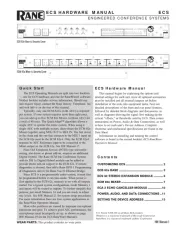
4 Juli 2025
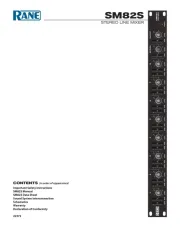
4 Juli 2025
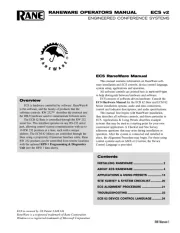
2 Juli 2025
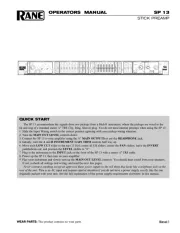
1 Juli 2025
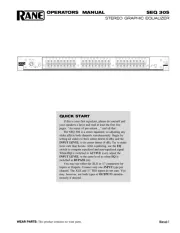
1 Juli 2025
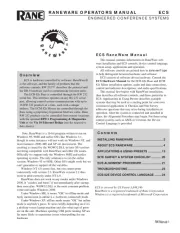
1 Juli 2025
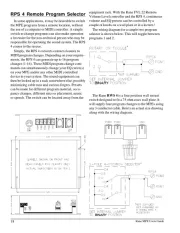
1 Juli 2025
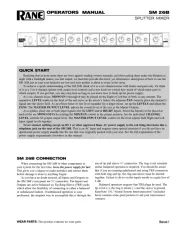
30 Juni 2025
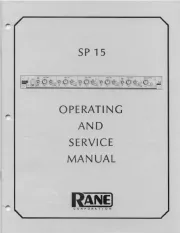
30 Juni 2025
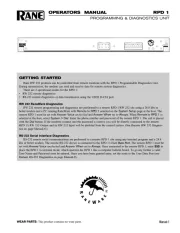
30 Juni 2025
Handleiding Niet gecategoriseerd
- Ryobi
- Tecno
- Doona
- IMG Stageline
- Rival
- Kwantum
- Fujitsu
- Malouf
- Noyafa
- Burigotto
- ELMEKO
- DataVideo
- Nintendo
- Biostar
- GAM
Nieuwste handleidingen voor Niet gecategoriseerd
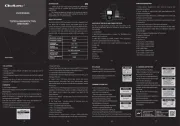
13 September 2025
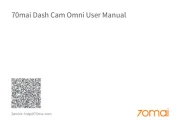
13 September 2025

13 September 2025

13 September 2025
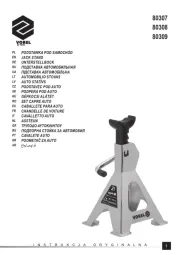
13 September 2025
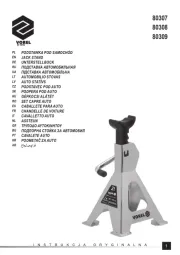
13 September 2025
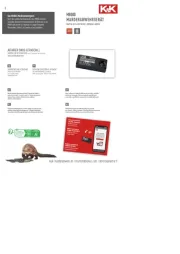
13 September 2025

13 September 2025

13 September 2025
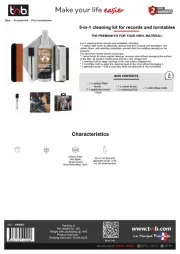
13 September 2025